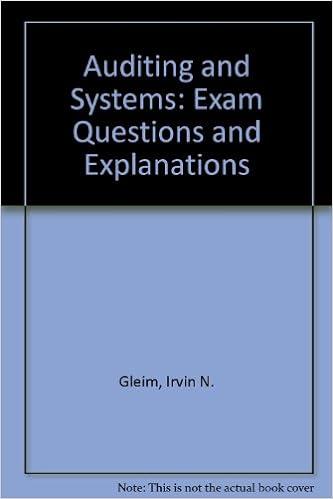Present Value of $1 at Compound Interest EXHIBIT 8 \begin{tabular}{cccccccccccc} Periods & 4% & 4%/2% & 5% & 5%/2% & 6% & 6/V% & 7% & 10% & 11% & 12% & 13% \\ \hline 1 & 0.96154 & 0.95694 & 0.95238 & 0.94787 & 0.94340 & 0.93897 & 0.93458 & 0.90909 & 0.90090 & 0.89286 & 0.88496 \\ 2 & 0.92456 & 0.91573 & 0.90703 & 0.89845 & 0.89000 & 0.88166 & 0.87344 & 0.82645 & 0.81162 & 0.79719 & 0.78315 \\ 3 & 0.88900 & 0.87630 & 0.86384 & 0.85161 & 0.83962 & 0.82785 & 0.81630 & 0.75131 & 0.73119 & 0.71178 & 0.69305 \\ 4 & 0.85480 & 0.83856 & 0.82270 & 0.80722 & 0.79209 & 0.77732 & 0.76290 & 0.68301 & 0.65873 & 0.63552 & 0.61332 \\ 5 & 0.82193 & 0.80245 & 0.78353 & 0.76513 & 0.74726 & 0.72988 & 0.71299 & 0.62092 & 0.59345 & 0.56743 & 0.54276 \\ 6 & 0.79031 & 0.76790 & 0.74622 & 0.72525 & 0.70496 & 0.68533 & 0.66634 & 0.56447 & 0.53464 & 0.50663 & 0.46032 \\ 7 & 0.75992 & 0.73483 & 0.71068 & 0.68744 & 0.66506 & 0.64351 & 0.62275 & 0.51316 & 0.48166 & 0.45235 & 0.42506 \\ 8 & 0.73069 & 0.70319 & 0.67684 & 0.65160 & 0.62741 & 0.60423 & 0.58201 & 0.46651 & 0.43393 & 0.40388 & 0.37616 \\ 9 & 0.70259 & 0.67290 & 0.64461 & 0.61763 & 0.59190 & 0.56735 & 0.54393 & 0.42410 & 0.39092 & 0.36061 & 0.33288 \\ 10 & 0.67556 & 0.64393 & 0.61391 & 0.58543 & 0.55839 & 0.53273 & 0.50835 & 0.38554 & 0.35218 & 0.32197 & 0.29459 \end{tabular} Present Value of Amounts Due Tommy John is going to receive $470,000 in three years. The current market rate of interest is 6%. a. Using the present value of $1 table in Exhibit 8 , determine the present value of this amount compounded annually. Round to the nearest whole dollar. $ b. Why is the present value less than the $470,000 to be received in the future? The present value is less due to over the 3 years. E X H I B I T 10 Present Value of an Annuity of $1 at Compound Interest Present Value of an Annulty Determine the present value of $130,000 to be received at the end of each of four years, using an interest rate of 5%, compounded annually, as follows: a. By successive computations, using the present value table in Exhibit 8, Round to the nearest whole dollar. b. By using the present value table in Exhibit 10. Round to the nearest whole dollar. 1 c. Why is the present value of the four $130,000 cash receipts less than the $520,000 to be received in the future? The present value is less due to over the 4 years










